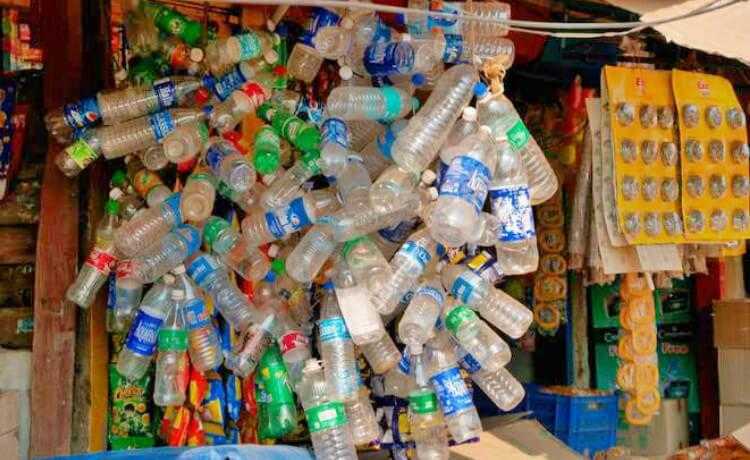What is carbon offsetting for companies
Carbon neutralization for companies is an alternative to avoid the consequences of climate change

Edited and resized image by Nikola Jovanovic is available on Unsplash
Carbon neutralization for companies is one of the techniques used to offset greenhouse gas emissions that cannot be reduced. Carbon neutralization is an alternative that seeks to avoid the consequences of climate change (caused by excess emissions of pollutants, such as carbon dioxide), based on a general calculation of carbon emissions or equivalent carbon (CO2e).
How the company can start
Before starting carbon neutralizing measures, the company needs to measure its own greenhouse gas emissions. This measurement can be made based on inventories that use conventional measurement tools, such as the Greenhouse Gas Protocol (GHG Protocol) and ISO14064.
The emissions inventory is an essential step, as it serves to discover the best way to reduce and/or neutralize emissions. For this, three steps are necessary:
- Find out what the emission sources are (use of nitrogen fertilizer, transport, etc.);
- Collect data (with workers, managers, directors, etc);
- Apply calculation (20 liters of used fuel emits a specified amount of CO2e, for example).
- Save resources with fuel and energy (the company identifies that improving fleet maintenance saves gasoline, for example - which in addition to reducing emissions, saves resources);
- Increase competitiveness and credibility;
- Expand the possibility of opening to new markets;
- Provide a clear response to investors;
- Provide access to special credits, among others.
When it is not possible to reduce emissions, either because it is too expensive for the company or because there is still no technology or logistics available, it can choose to offset it by means of neutralization.
Reduction versus neutralization
After carrying out the inventory, the company will have the necessary information to decide how it can reduce and/or neutralize its greenhouse gas emissions. The reduction is made by the company itself (increasing maintenance or renewing the fleet, for example). Compensation, which can also be called neutralization, is the reduction made by another company, which sells it in the form of carbon credits (which may cost less than implementing the reduction in the company itself).
Carbon neutralization works as follows: Company X produces five tons of carbon in its activities, so to zero its emissions, it must buy five carbon credits (one carbon credit = one ton of carbon equivalent - CO2e). Thus, a search is carried out for reliable and certified companies, such as company Y, which captures biogas from a landfill and transforms it into energy, or even company Z, which preserves native forests. These companies generate carbon credits for the use of clean energy or for avoiding deforestation. These credits are calculated by the total CO2e that is no longer generated. Then a partnership is created between the companies - one buys the carbon credits neutralizing its emissions and the other receives the investments.
- What is deforestation?
In other words, when the company cannot do the carbon reduction itself (either because it would be too expensive or because it is not structurally possible) it compensates, buying the carbon offset from another company.
Carbon Neutralization Techniques
Tree planting is one of the most common forms of carbon neutralization, due to the easy access to purchase by anyone, whether companies or individuals. In addition to carbon sequestration through the planting of trees, forest conservation brings several other benefits for soil, water, biodiversity, among others.
Another common technique is carbon neutralization through the use of alternative energies. Power generation is a major carbon emitter globally, so replacing conventional energy with 100% clean energy sources is an efficient way to neutralize carbon. The article "What is renewable energy" explains how this technique works.
But there is also the technique of carbon capture and storage - CCS (English acronym for carbon capture and storage). CCS may be the only option to achieve significant reductions in carbon generated by the use of fossil fuels. See the process of this method in the article "Carbon Neutralization Techniques: Carbon Capture and Storage (CCS)".
But carbon neutralization techniques don't stop there, accelerating natural weathering processes to capture CO2 with natural reactions is another method. Mineral silicates present in rocks when dissolved by weathering react with atmospheric CO2 capturing it and converting it to stable forms. Sound complex? understand better in the article "Carbon neutralization techniques: weathering acceleration".
The technique of preserving and increasing soil carbon stock is also very promising. Through correct soil management and addition of organic matter, it is possible to store carbon, thus neutralizing residual emissions. See how simple this method is in the article "Carbon Neutralization Techniques: Soil Carbon Storage".
Another way to sequester carbon from the atmosphere is through ocean fertilization. It consists of adding iron to the ocean to increase the area's biological growth and convert more atmospheric CO2 into stable carbon. However, carbon offsetting by this technique is still uncertain due to impacts not yet understood on the marine ecosystem. See more about the challenges and limitations of this technique in the article "Carbon Neutralization Techniques: Ocean Fertilization".
How do I know if my company generates carbon emissions? Do I need to neutralize?
The carbon footprint (carbon footprint - in English) is a methodology created to measure greenhouse gas emissions - all of them, regardless of the type of gas emitted, are converted into equivalent carbon. These gases, including carbon dioxide, are emitted into the atmosphere during the life cycle of a product, processes, services and activities. Examples of activities that generate emissions are the burning of fossil fuels such as air travel and mechanized harvesting, consumption of any nature (food, clothing, entertainment), event production, the creation of pasture for cattle, deforestation, production of cement, among others. All these activities, in addition to the other gases, emit carbon and can be carried out by people, companies, NGOs and governments - that's why all these entities can carry out carbon neutralization.
If you eat a plate of rice and beans, be aware that there was a carbon footprint for that meal - if your plate contains food of animal origin, this footprint is even greater, due to the greater demand for planting, cultivating and transporting livestock. . Knowing the carbon emission, directly or indirectly, is very important to reduce it in order to slow down global warming, improve the planet's quality of life, reduce the ecological footprint and avoid overshoot, known as the Earth overload.
- If people in the US traded meat for beans, emissions would be drastically reduced, according to research.
Reducing superfluous consumption and opting for a more environmentally friendly posture, practicing correct disposal and composting, for example, are ways to reduce carbon emissions. Another way to contribute to reducing the carbon footprint is to prioritize conscious consumption, encouraging companies that neutralize or reduce their emissions. In this sense, companies in system B have gained prominence. During the United Nations Climate Change Conference, COP25, which took place in Madrid, 533 B Companies publicly committed to accelerate the reduction of their carbon emissions by 2030, and not by 2050, as set out in the Paris Agreement in 2015 .
Some committed B Companies are: Patagonia, Davines, Allbirds, Intrepid Travel, The Body Shop, Natura, , The Guardian, among others. Certified B Companies are companies that meet the highest verified standards of social and environmental performance, transparency and legal responsibility. Worldwide, there are more than 3,000 B Companies, from more than 70 countries and 150 areas, that use the power of business to solve today's main social and environmental challenges, including the climate crisis.
If you are an entrepreneur or entrepreneur and want to reduce or neutralize your emissions, it might be interesting to get to know Eccaplan, a company that offers the carbon calculation and neutralization service for individuals and companies.
Unavoidable emissions can be offset in certified environmental projects. In this way, the same amount of CO2 emitted by your company's activities, products, events or during the work period of each employee is compensated with incentives and the use of clean technologies.
Carbon offsetting or neutralization, in addition to making environmental projects financially viable, improves people's quality of life and promotes the sustainable use of green areas. To find out how to start neutralizing the carbon emitted by you, your company or event, watch the video and fill out the form below:









